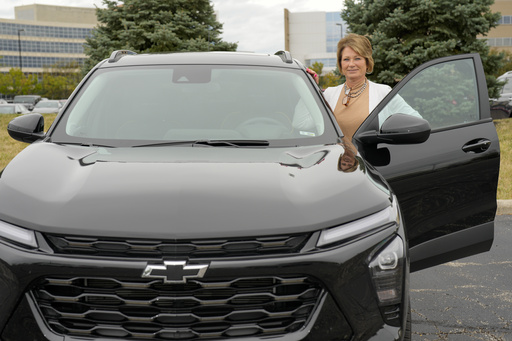
DETROIT — Michelle Chumley had the means to acquire a luxury SUV brimming with features, yet she opted for a more economical choice when it was time to replace her Chevrolet Blazer, which she had purchased for around $40,000 three years prior. Instead, this June, she decided on the Chevrolet Trax, a compact SUV, mirroring a growing trend among consumers focusing on cars priced between $20,000 and $30,000, which is rapidly becoming the fastest-growing segment of new vehicle sales in the U.S.
Chumley, a 56-year-old nurse residing near Cincinnati, expressed, “I just don’t need that big vehicle and to be paying all of that gas money.” This choice reflects a broader shift noted by auto industry analysts who are observing what they describe as an “affordability shift.” Consumers are increasingly finding themselves unable to manage the new average vehicle price, which has exceeded $47,000—a significant over 20% increase since before the pandemic.
Financing a new vehicle at this average price translates to a monthly payment of $737, assuming a loan term of nearly six years at the prevailing interest rate of 7.1%. For many, such a financial commitment is simply unmanageable. However, some buyers could afford it but opt against it, deeming it an unnecessary expenditure. Consequently, automakers are feeling pressure to rethink their sales and production strategies in light of changing consumer priorities.
The rise in costs and high loan rates have resulted in only a modest 1% increase in new vehicle sales through September compared to the previous year. If this trend toward more affordable vehicles persists, auto manufacturers may need to adjust their pricing, potentially leading to discounts that could lower average auto prices and diminish industry profits.
Consumers are demonstrating increased caution as they navigate ongoing economic challenges and elevated price points, according to Kevin Roberts, director of market intelligence at CarGurus. “This year, all of the growth is happening in what we would consider the more affordable price buckets,” he noted, citing a significant uptick in vehicle sales in the $20,000 to $30,000 range, which accounted for 43% of total recent sales growth.
In an effort to stimulate sales of their premium models, automakers have begun offering more substantial discounts. The average incentive per vehicle has almost doubled to $1,812, according to research data. General Motors anticipates a 1.5% reduction in its average selling price for the latter half of the year.
Statistics reveal a 7% increase in new vehicle sales to individual buyers from the previous year, with compact and subcompact cars and SUVs from mainstream brands seeing the most rapid growth since 2018. This renewed interest in affordable vehicles resembles pre-pandemic purchasing habits; in 2018, such models comprised about 35% of new vehicle sales.
The pandemic severely impacted the production of compact and subcompact vehicles, primarily due to a global chip shortage, which forced automakers to favor the production of higher-priced trucks and SUVs, subsequently leading to significant profit margins for those models. As demand shifted, the market share of compact vehicles dwindled to less than 30% by 2022.
This year, however, that figure has rebounded to nearly 34%, with compact sedans experiencing a 16.7% increase in sales through September compared to the previous year, while large SUVs struggle to grow at all. The enduring popularity of Ford’s F-Series remains unchallenged, despite the rise of compact models like the Toyota RAV4 and Honda CR-V that are now outpacing pricier competitors.
Buyers’ preference for lower-priced vehicles has shifted rapidly in 2023, catching some automakers unprepared, leading to excess inventory in more expensive categories. Analysts suggest that many consumers have already made significant purchases at the near $50,000 mark and may now be looking to hold onto their existing vehicles longer. Additionally, with interest rates still high and auto insurance costs rising dramatically, many are opting for affordability.
Keith McCluskey, the CEO of the dealership where Chumley purchased her Trax, notes that the frugality trend transcends income levels, with many affluent buyers also opting for smaller, more affordable vehicles due to economic uncertainties. The surplus of pricey models poses profitability challenges for manufacturers like Stellantis.
In foresight of these shifting consumer preferences, General Motors had anticipated a movement away from higher-priced models and strategically prepared with the launch of the redesigned Trax earlier this year. Sales of the Trax in the United States have surged by 130% this year alone, establishing it as the leading subcompact SUV in the country.
While the continuation of this affordability trend is uncertain, industry analysts point to potential interest rate cuts by the Federal Reserve as a factor that could shift consumer preferences back to larger vehicles in the future. Charlie Chesbrough, Cox Automotive’s chief economist, stated, “We’ll see consumers start moving into these larger vehicles” if financing becomes more accessible.
